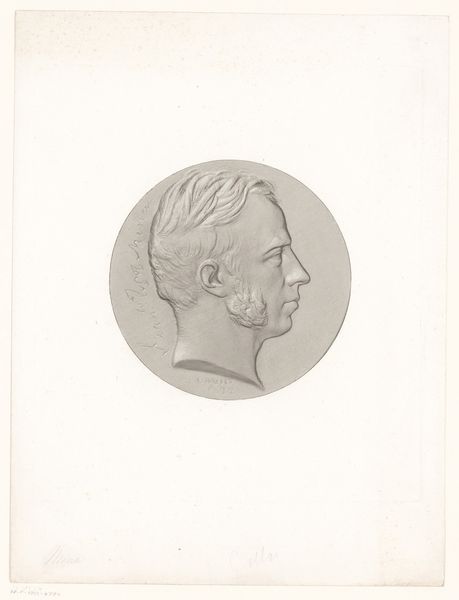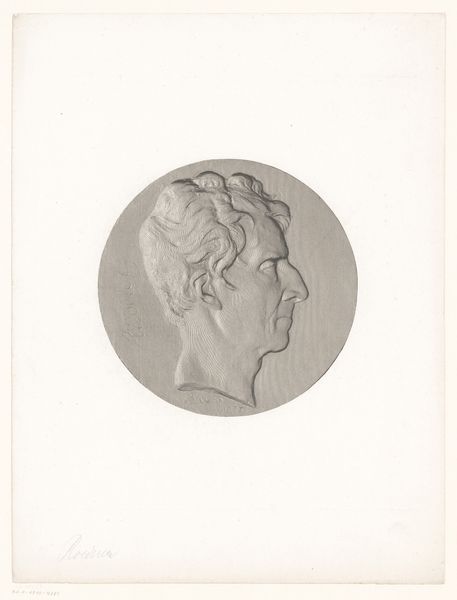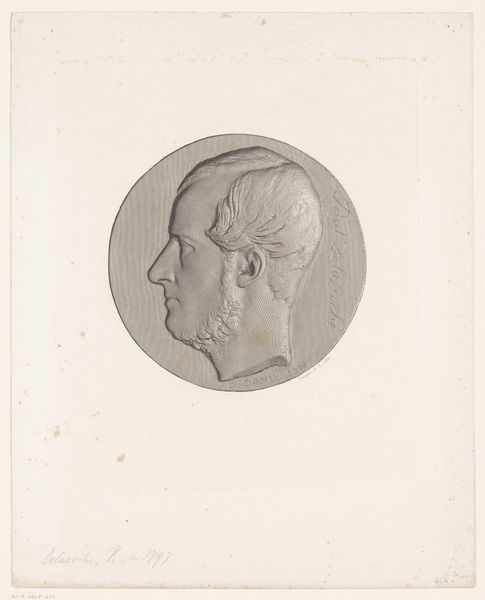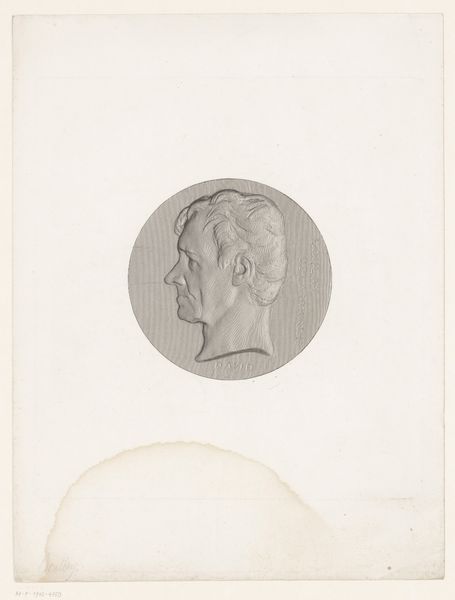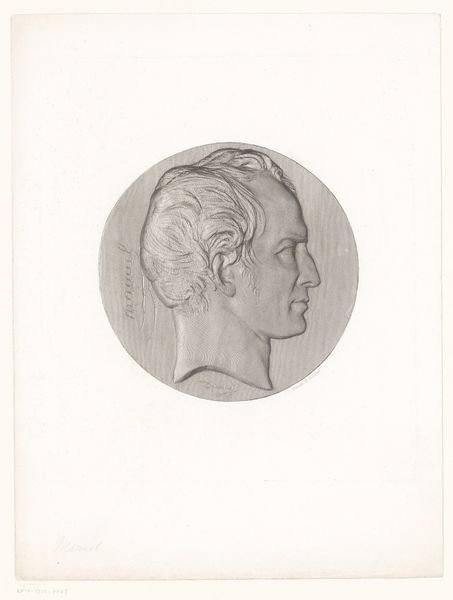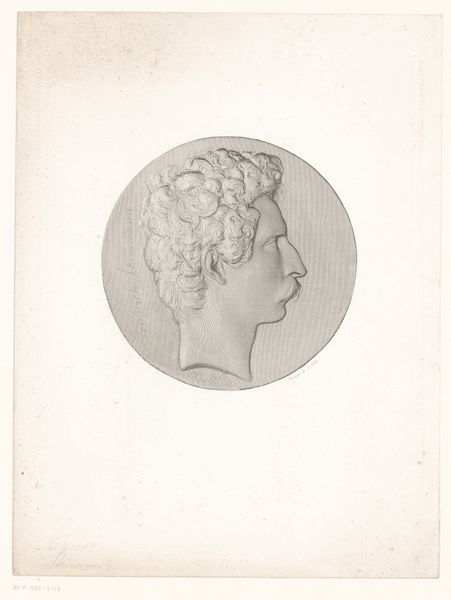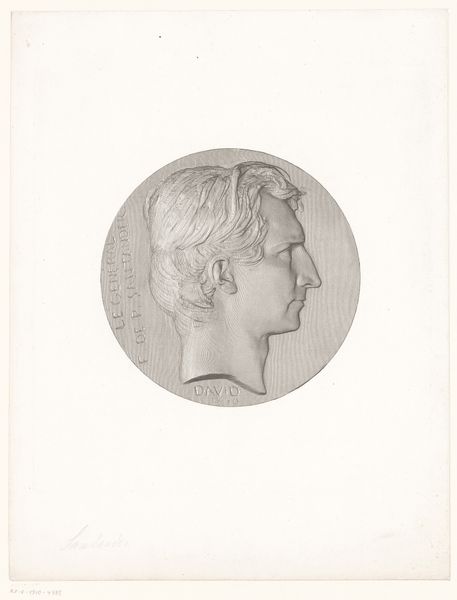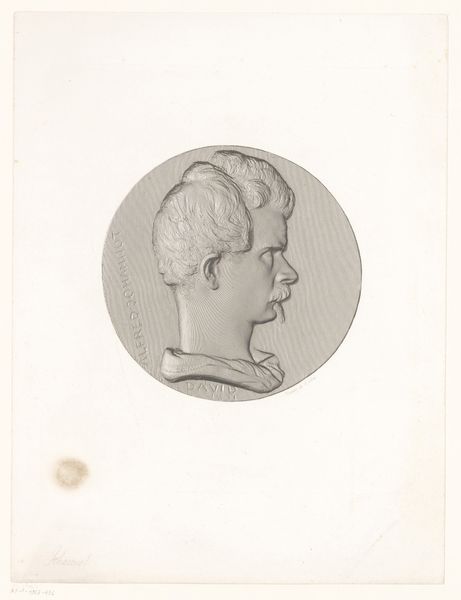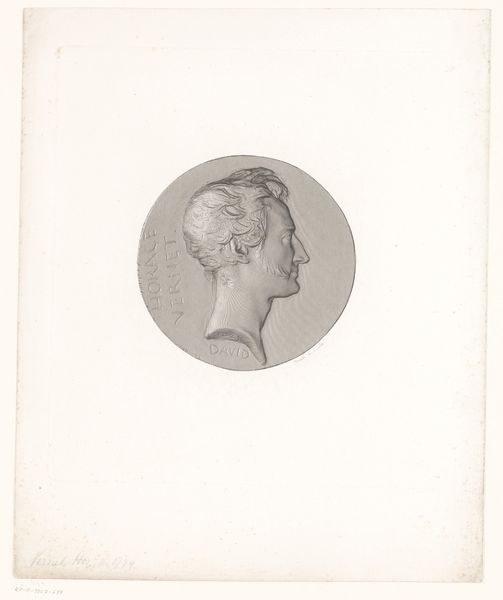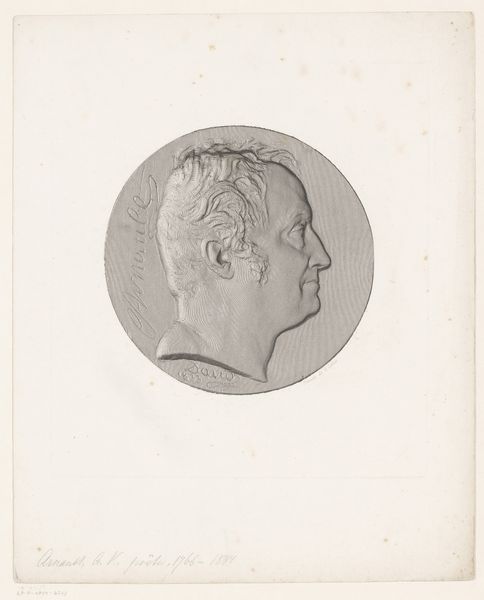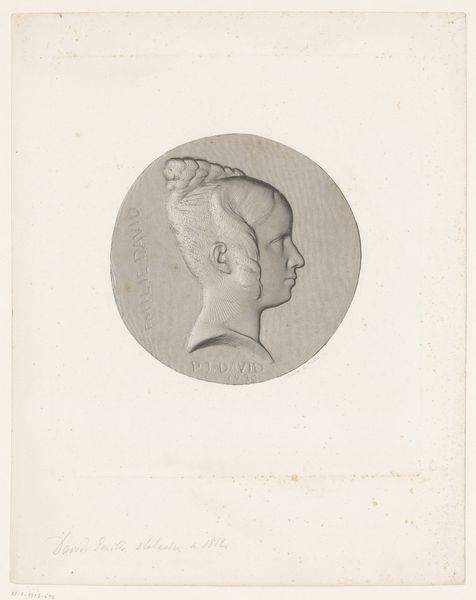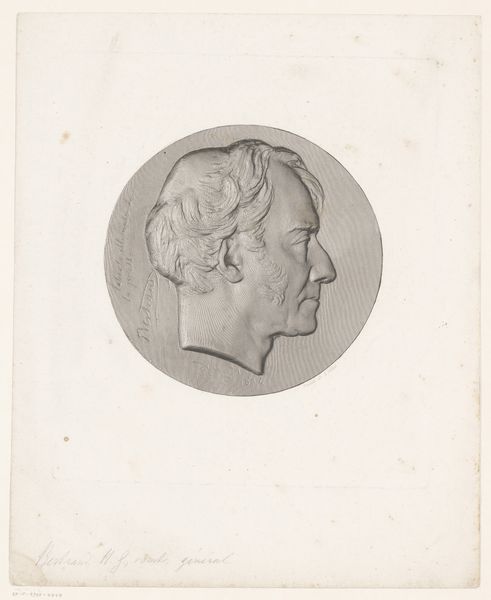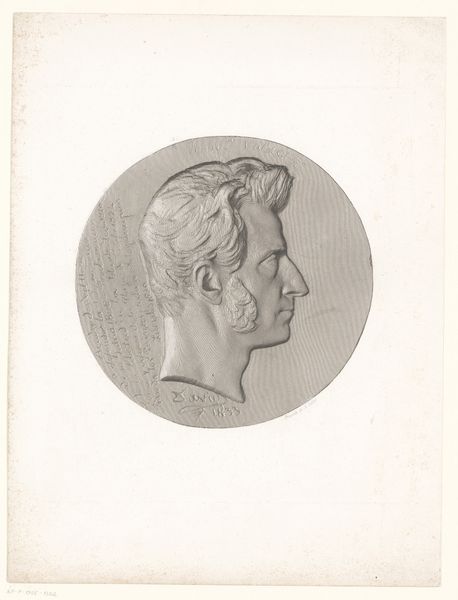
print, engraving
#
portrait
#
neoclacissism
# print
#
classical-realism
#
history-painting
#
engraving
Dimensions: height 243 mm, width 208 mm
Copyright: Rijks Museum: Open Domain
Curator: At first glance, I notice the precise, almost mechanical rendering of form. The use of line to create shading and depth feels incredibly controlled and deliberate. Editor: This is "Medaille met portret van Félix Lepeletier," an engraving crafted between 1820 and 1840 by Achille Collas. Collas was quite known for his reproductions of sculptures. Curator: Reproduction is an important aspect. The nature of printmaking implies distribution, thus making accessible a version of someone previously confined to elite circles, broadening Lepeletier's impact within society. Editor: Yes, engraving as a process certainly speaks to a level of industrialization impacting artistic practice. It's no longer unique in that singular crafted method, is it? Curator: Not quite unique, but not identical either! Each print retains the subtle differences introduced by the artisan involved in the production. How might the historical role of portraiture have influenced the presentation of Lepeletier? Editor: Given the timeframe, portraiture served powerful ideological functions. Lepeletier, depicted with a resolute profile reminiscent of Roman emperors, suggests authority and nobility—reinforcing specific power structures. The clean, spare presentation is firmly Neoclassical, a conscious nod to a specific historical style. Curator: True! Considering neoclassical aesthetics alongside industrial methods of image production offers a unique reading. How does the labor invested affect its value compared to the original sculpted form that inspired the print? Editor: Perhaps that difference diminishes within a democratized marketplace. Reproducibility grants a symbolic value separate from, though born of, physical investment. The image spreads and the ideal of Lepeletier takes precedence. Curator: So the social circulation overtakes the material origins...Interesting perspective. It reframes the understanding of this piece! Editor: Indeed, by analyzing its history alongside considering its materiality. Hopefully listeners find a similar joy as we draw this conversation to an end.
Comments
No comments
Be the first to comment and join the conversation on the ultimate creative platform.
